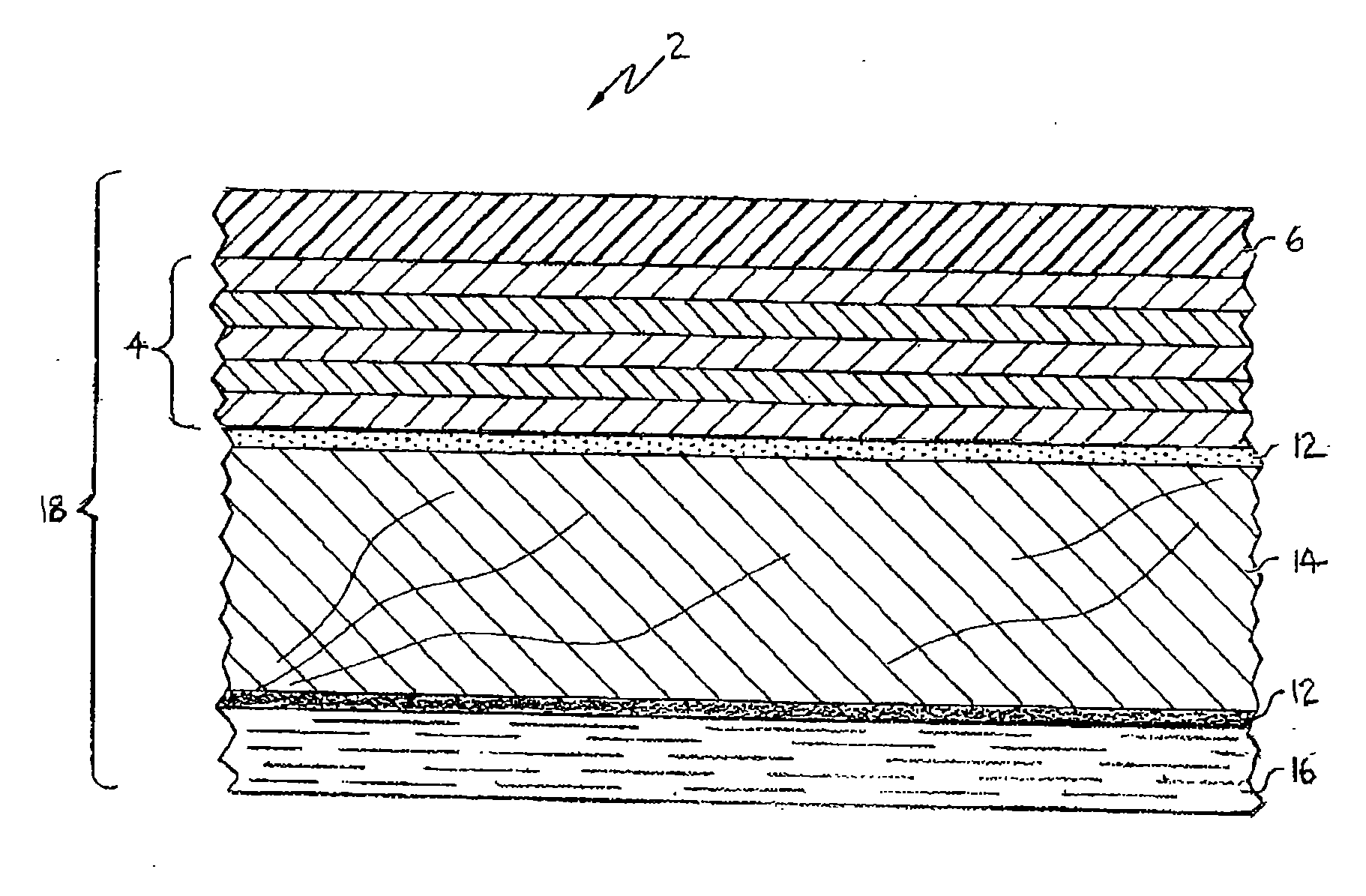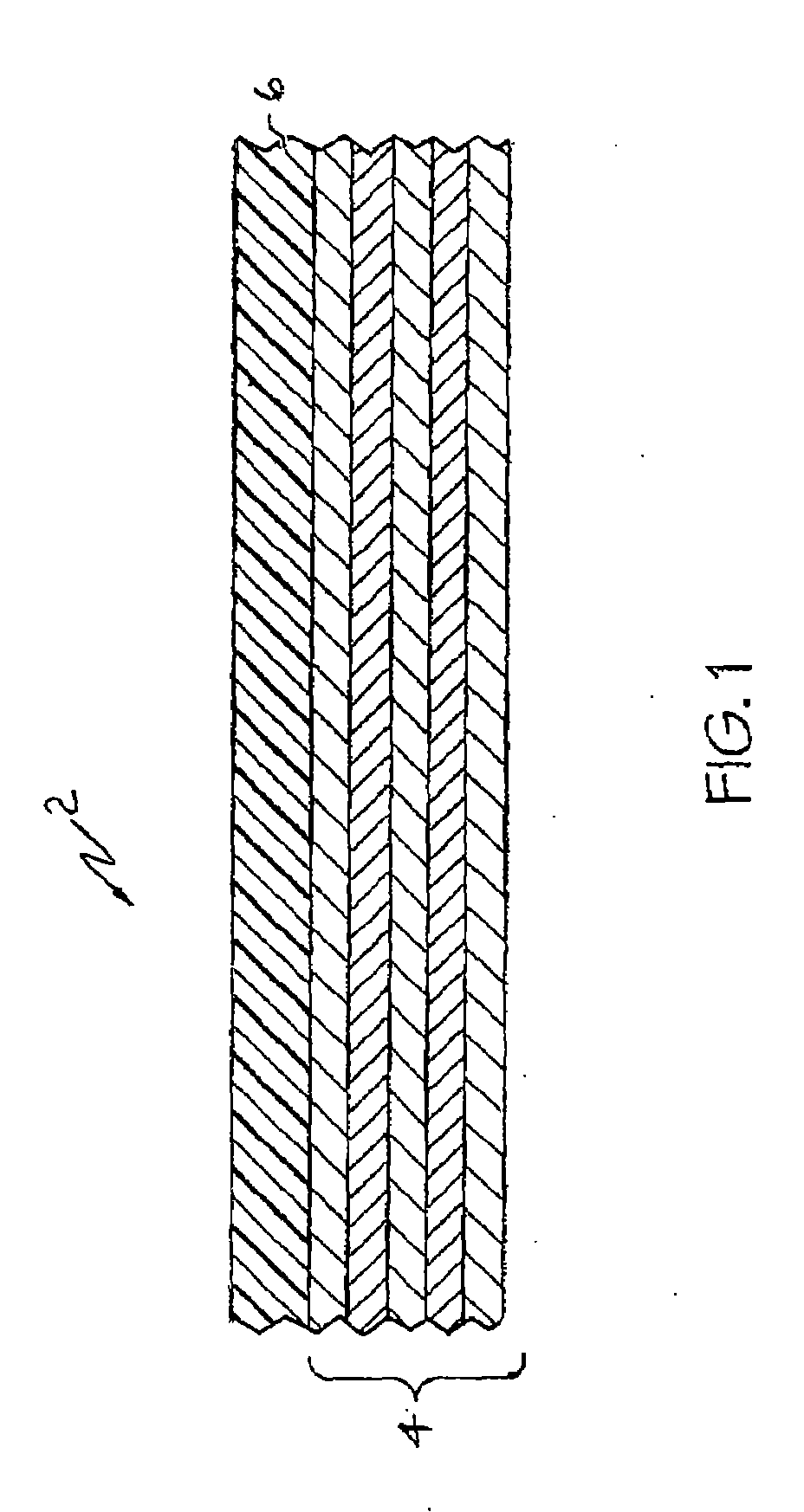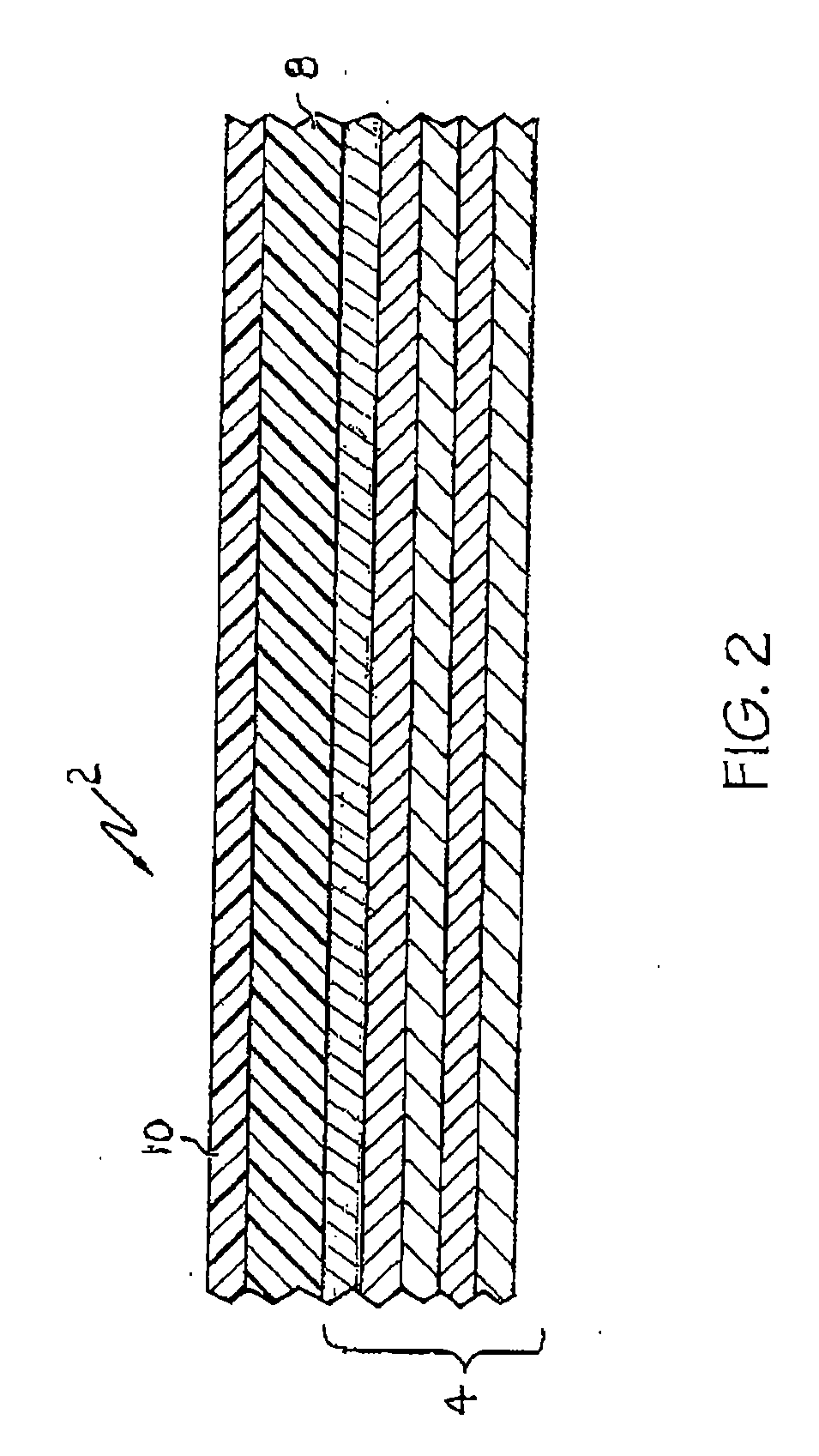Through color high pressure decorative laminate and method of making same
a high-pressure, decorative laminate technology, applied in the direction of photomechanical equipment, instruments, furniture parts, etc., can solve the problems of phenolic core, more visually distracting and aesthetically objectionable dark edges, phenolic edges tend to oxidize and further darken, and achieve high pressure
- Summary
- Abstract
- Description
- Claims
- Application Information
AI Technical Summary
Benefits of technology
Problems solved by technology
Method used
Image
Examples
example 1
[0051]To a suitable stainless steel reactor, equipped with a steam heating and cooling water jacket, agitator, condenser, and vacuum pump, are charged, in order, 32.05 parts of a 37% aqueous formaldehyde solution and 27.12 parts deionized water. The pH of the mixture is adjusted with approximately 0.05 parts of a 30% sodium hydroxide solution to 9.5±0.1. Then, 35.54 parts melamine and 3.88 parts dicyanodiamide (1-cyanoguanidine) are charged to the reactor. The pH of the slurry is adjusted, if necessary, using sodium hydroxide solution to a pH of 9.4±0.1. With the reactor vent closed, the agitated mixture is heated for approximately 50 minutes to reflux at about 1.0 bar gauge pressure and about 120° C.
[0052]After 5 minutes, upon solution of the melamine and dicyanodiamide, the resin is rapidly cooled to 95° C. using jacket cooling water, controlled reflux venting of the reactor, and then vacuum ref lux. The reaction is held at 95° C. to a final water tolerance of 40% to 80%. Water to...
example 2
[0053]A 1.4:1 formaldehyde-to-melamine mol ratio, dicyanodiamide modified melamine resin prepared as in Example 1 is used to treat a 122 gsm (75 pound / ream) titanium dioxide pigmented alpha-cellulose white solid color decorative paper (from Mead / Westvaco Corporation) to a 51%-53% resin content and a 6.5%-8.5% volatile content. As used herein, the term “resin content” is defined as the difference in weight of a given area of the treated paper and the initial untreated “raw” paper divided by the weight of the treated paper, expressed as a percentage. Similarly, as used herein, the term “volatile content” is defined as the difference in weight of a given area of the treated paper and the same treated paper sample after complete oven drying at 165° C. for 5 minutes, divided by the original weight of the treated paper, expressed as a percentage. After impregnation of the solid color decorative paper with the modified melamine resin, and partial drying through a tunnel oven, the treated p...
example 3
[0054]To a suitable stainless steel reactor, equipped with a steam heating and cooling water jacket, agitator, condenser, and vacuum pump, are charged, in order, 19.26 parts by weight 37% aqueous formaldehyde solution, 40.57 parts deionized water, and 0.15 parts CRC636 latent catalyst. The pH of the mixture is then adjusted using approximately 0.05 parts of a 30% sodium hydroxide solution, as required, to a pH of 9.6±0.1. Then, 21.31 parts melamine and 4.41 parts dicyanodiamide (1-cyanoguanidine) are charged to the reactor. With the reactor vent open, the agitated mixture is heated for approximately 35-40 minutes to atmospheric reflux at about 100° C. to 103° C. Reflux is maintained until a water tolerance at 25° C. of 170-200% is obtained.
[0055]The resin is then rapidly cooled to 80° C. using jacket cooling water and vacuum reflux in about 6 minutes. With continued cooling, after venting to atmospheric pressure, in order are charged to the reactor: 0.15 parts 30% sodium hydroxide s...
PUM
| Property | Measurement | Unit |
|---|---|---|
| boiling points | aaaaa | aaaaa |
| boiling points | aaaaa | aaaaa |
| thickness | aaaaa | aaaaa |
Abstract
Description
Claims
Application Information
 Login to View More
Login to View More - R&D
- Intellectual Property
- Life Sciences
- Materials
- Tech Scout
- Unparalleled Data Quality
- Higher Quality Content
- 60% Fewer Hallucinations
Browse by: Latest US Patents, China's latest patents, Technical Efficacy Thesaurus, Application Domain, Technology Topic, Popular Technical Reports.
© 2025 PatSnap. All rights reserved.Legal|Privacy policy|Modern Slavery Act Transparency Statement|Sitemap|About US| Contact US: help@patsnap.com



